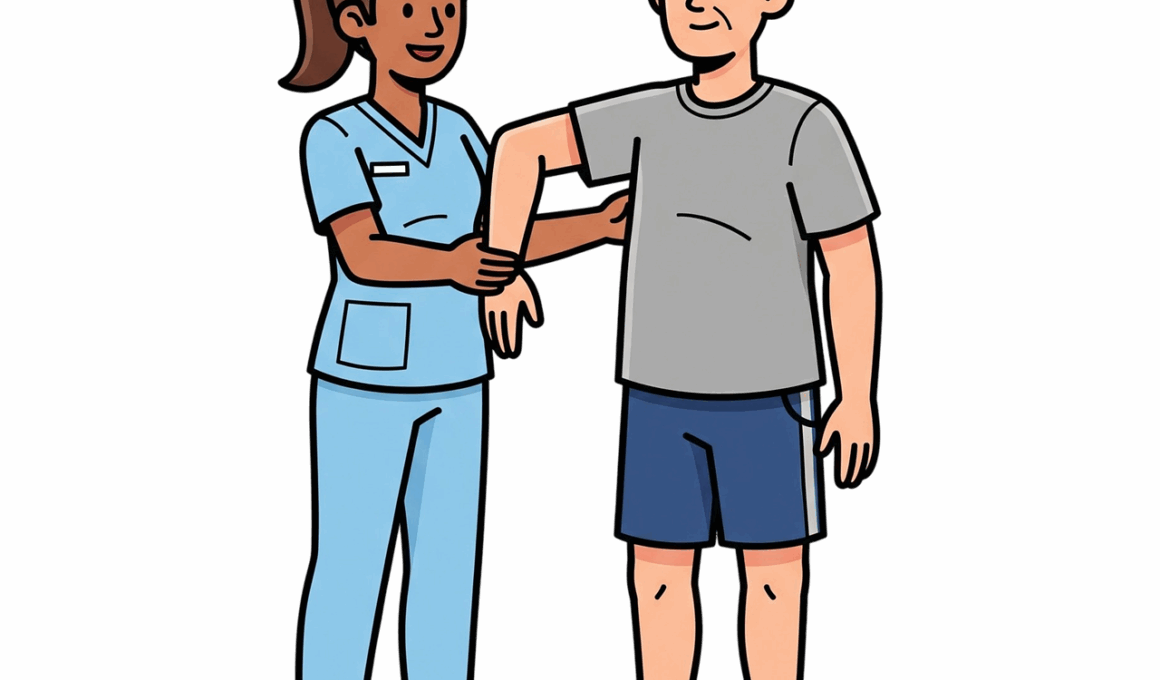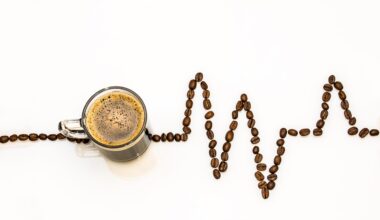Strength Training for Rehabilitation After Stroke
Strength training can play a pivotal role in the rehabilitation process after a stroke. Following a stroke, many individuals experience significant physical limitations and muscle weakness, which can severely impact their daily activities and overall quality of life. Implementing a structured strength training program can help improve muscle strength, enhance mobility, and promote functional independence. Strength training focuses on repetitively performing exercises that resist movement, which gradually builds muscle strength and endurance. The exercises can be tailored to meet the specific needs and abilities of each individual, making it a versatile choice during rehabilitation. As a primary benefit, it aids in countering the muscle atrophy that may occur post-stroke due to inactivity. Furthermore, strength training can also help to improve balance and coordination, reducing the risk of falls, which is particularly important for stroke survivors. Research indicates that even low-intensity strength training can lead to meaningful improvements in muscle function, contributing positively to recovery outcomes. In a supportive environment, stroke patients can regain confidence while developing a routine that facilitates their rehabilitation journey.
To effectively implement strength training after a stroke, it is essential to first conduct a comprehensive assessment of the individual’s current physical abilities and limitations. This assessment typically involves a medical evaluation that focuses on the individual’s range of motion, muscle strength, balance, and coordination. Based on this assessment, a tailored strength training program can be developed that ensures safety and promotes progress. A qualified physiotherapist or rehabilitation specialist can design an individualized program, incorporating various techniques and exercises suited for stroke survivors. These exercises might include resistance training with free weights, resistance bands, or even body weight exercises that help build strength without extreme exertion. The training should start gradually, allowing the body ample time to adapt before progressing to more complex movements. Regular monitoring and adjustments to the program as the patient improves are also critical components. Consistency is vital, and participants should engage in strength training exercises a few times a week for optimal results. This ongoing commitment to strength building can vastly enhance an individual’s recovery experience.
Benefits of Strength Training
Engaging in strength training post-stroke offers numerous benefits that can significantly enhance recovery outcomes. Firstly, it helps to rebuild muscle strength lost during hospitalization or due to inactivity. Reestablishing muscle strength is crucial not only for physical health but also for improved self-esteem as individuals notice their gradual progress. The incorporation of these exercises facilitates recovery of gross motor skills, which can mean the difference between increased independence and reliance on caregivers. Strength training also contributes to enhanced joint stability and may alleviate pain associated with muscle weakness or imbalances. Improved muscle flexibility can also result, allowing for a greater range of motion, making everyday tasks easier and less frustrating. Moreover, strength training has positive implications for mental health, promoting the release of endorphins, which can alleviate symptoms of depression and anxiety prevalent among stroke survivors. This holistic improvement of both body and mind encourages greater participation in rehabilitation, fostering motivation and determination. Additionally, enhancing one’s physical abilities can lead to better social relationships, contributing to overall well-being and community integration.
Incorporating strength training into rehabilitation requires an understanding of proper techniques to prevent injury. Stroke survivors must be taught correct body mechanics to achieve optimal results safely. Overtraining or improper execution of exercises can lead to setbacks, so maintaining a focus on form is of utmost importance. One effective strategy is to start with simpler exercises that are less demanding before advancing to those that require greater strength and coordination. Assistive devices may initially be necessary, and as skills improve, patients can gradually transition from using these aids toward more independent strength training activities. Another critical aspect is recognizing the individual’s limitations and adapting the program accordingly; push them to challenge but not overwhelm them. Keeping sessions engaging and varying the activities can help maintain motivation throughout the process. Moreover, recovery should not be rushed; taking gradual steps ensures the body has time to adapt to the new physical demands. Sustaining an organized routine will provide structure, helping stroke survivors integrate strength training seamlessly into their lives.
Collaboration with Health Professionals
Collaboration with health professionals is a vital aspect of an effective strength training rehabilitation program. Physical therapists, occupational therapists, and rehabilitation specialists can ensure that strength training exercises align with the individual’s needs. They can provide individualized guidance based on observed progress and ongoing assessments. This team approach not only aids in the correct implementation of exercises but also enhances motivation by providing support throughout the recovery journey. Regular communication between healthcare providers and individuals undergoing rehabilitation is crucial for adjusting exercise programs as the individual’s capabilities evolve. Emphasizing teamwork helps create a comprehensive plan that incorporates flexibility and adaptation while focusing on personal goals. In addition, therapists can offer education on body mechanics and provide strategies to address any physical limitations. They also play a significant role in devising at-home exercises, encouraging patients to integrate strength training into their daily routines. This structured collaboration boosts confidence, empowers stroke survivors to take charge of their rehabilitation, and significantly amplifies the likelihood of achieving positive outcomes.
Setting realistic goals is another critical component of strength training for rehabilitation. Goals should be specific, measurable, achievable, relevant, and time-bound (SMART). This framework helps individuals focus their efforts on distinct outcomes, providing clarity and motivation as they progress. Short-term goals may include achieving improved strength in specific muscle groups or completing a designated number of repetitions successfully. Long-term goals can involve regaining independence in daily tasks or returning to prior physical activities and hobbies. Celebrating small milestones is essential as it motivates individuals to continue their rehabilitation journey. Encouragement from both health professionals and family members can create a positive environment where stroke survivors feel supported and understood. Furthermore, documenting progress can provide visual evidence of improvement, enhancing motivation and self-efficacy. Every achievement, regardless of size, bolsters confidence and inspires continued dedication to the rehabilitation process. With a focus on achievable milestones, stroke survivors can create a personalized roadmap that reflects their unique recovery journey and inspires continued progress in their physical capabilities.
The Importance of Consistency
Consistency is key when it comes to reaping the benefits of strength training for rehabilitation after a stroke. Engaging in regular sessions can ensure that the results achieved are sustained over time. A structured routine enhances muscle memory, helping stroke survivors become more familiar with various exercises and movements, leading to better performance. Practicing these routines multiple times a week not only solidifies new skills but also accelerates the recovery process. Establishing a commitment to regular strength training sessions promotes a long-term attitude toward recovery as participants increasingly realize their capability for improvement. Scheduling specific days and times for exercises can assist individuals in turning strength training into a regular part of their daily lives. Furthermore, incorporating social aspects, such as exercising with a friend or in a group, can significantly enhance motivation and accountability. Celebrating progress together fosters a sense of community, essential in recovery. Ultimately, those who commit to consistent strength training experiences will notice profound changes in their physical and mental health, marking a significant turning point in their rehabilitation journey.
In conclusion, strength training serves as a critical element for rehabilitation after stroke and can significantly enhance recovery outcomes. The multifaceted benefits include improved muscle strength, enhanced mobility, better balance, and overall emotional well-being. Properly structured strength training programs can lead to substantial advancements in regaining independence, increasing confidence, and enhancing quality of life. To maximize the effectiveness of these programs, collaboration with qualified health professionals is necessary to tailor exercises to each individual’s unique needs. Consistency, goal-setting, and the incorporation of social support mechanisms are all vital components that contribute to positive results. As stroke survivors embark on their rehabilitation journeys, strength training provides not only a path toward physical recovery but also an avenue for empowerment, enabling individuals to reclaim their lives post-stroke. By embracing the rehabilitative potential of strength training, patients can find hope and determination they may have thought lost after their stroke. Ultimately, the physical improvements gained through dedicated practice extend far beyond the gym, positively influencing all aspects of life.


